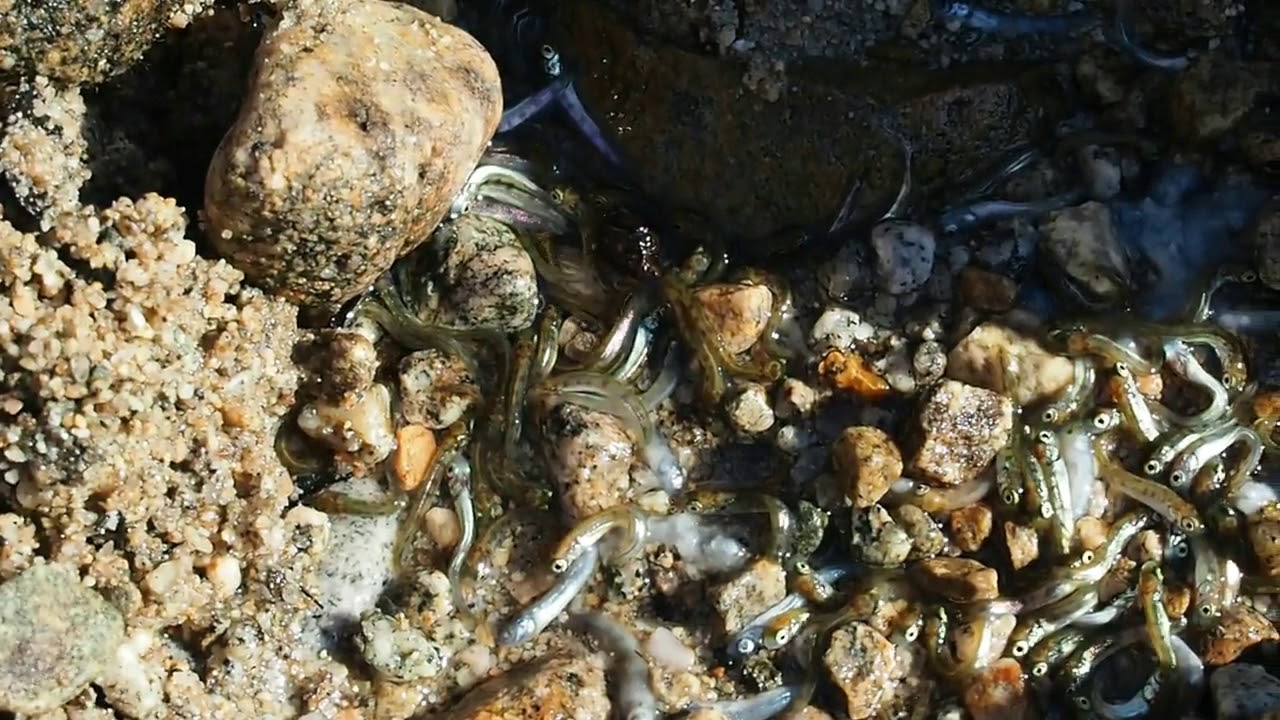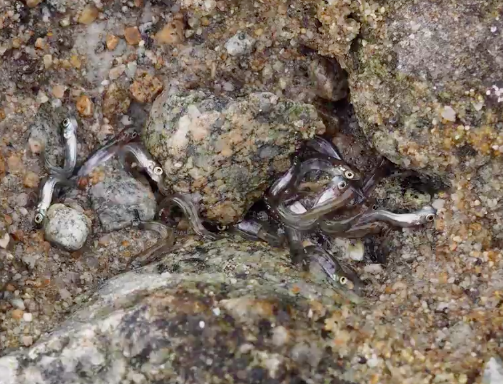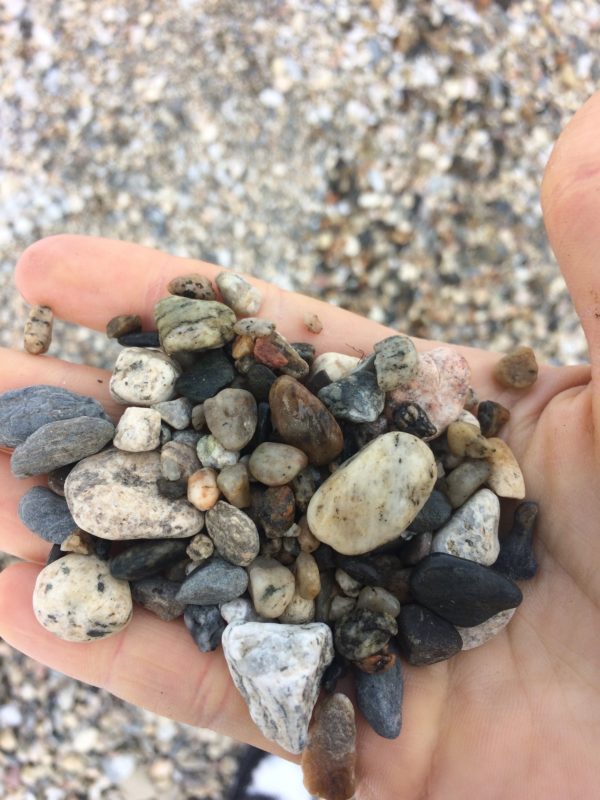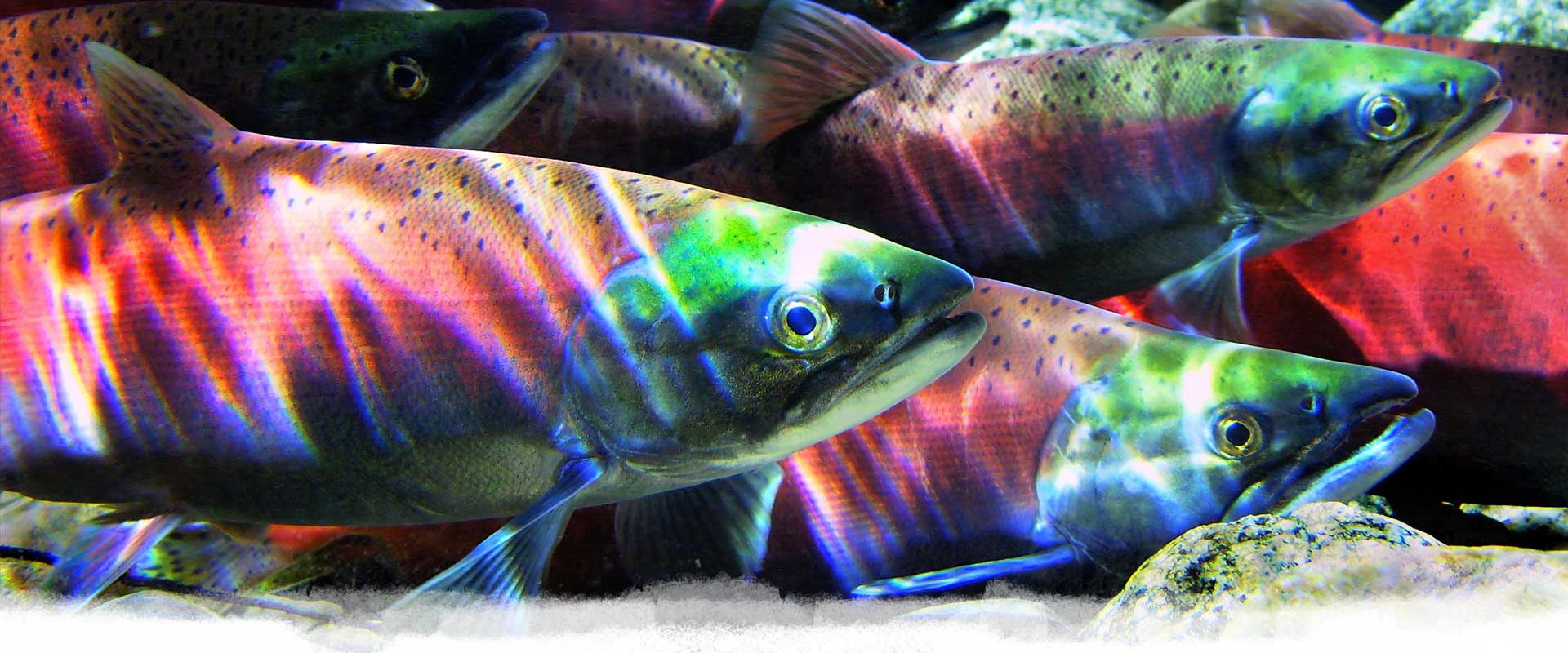
14 May Support FOKLSS in helping Kootenay Lake’s shore-spawning Kokanee population
This year locals around Kootenay Lake have noticed the water levels are shockingly low all around the lake. Although this is alarming, it is not an uncommon sight for this time of year. Water levels are controlled by hydro dams on the lake in order to prevent flooding from spring run-off. It’s easy to forget that Kootenay Lake acts as a reservoir, and is managed for many reasons, including power generation, navigation, and flood control.
 One of the consequences of these low water levels is the impact they have on riparian areas and our local fish species. The most notable being the Shore-spawning Kokanee salmon of Kootenay Lake’s West Arm.
One of the consequences of these low water levels is the impact they have on riparian areas and our local fish species. The most notable being the Shore-spawning Kokanee salmon of Kootenay Lake’s West Arm.
This species of salmon is genetically distinct to this area, they are a landlocked species that spawn on the rocky shores of the West Arm. They require habitat where there is groundwater infiltration and where tributaries deposit an abundance of pea-sized gravel. This shoreline habitat is where they make their nests or redds, that are usually 0.5-2.0 meters below the water surface. Kokanee spawns here in the fall by burying their eggs in the gravel. These eggs then develop into fry that emerges in the spring (late March).
They require the redds to be covered by water so that the Kokanee fry can swim to the lake and go onto the next phase of life. But with water levels being lower than expected this spring these nests are becoming dewatered, stranding the fry in the drying up the redds on shore. We have yet to see how this year’s low water levels will impact Kokanee numbers on Kootenay Lake.
Last year there were efforts to try and encourage Kokanee to spawn at lower elevations by keeping water levels low in the fall. Unfortunately, the spring water levels were even lower than expected, causing many of the redds on the West Arm to be dewatered. Wildlife Biologists Joanne Siderius took this video of dewatered redds at Kokanee Creek Provincial Park and published this article on the West Kootenay Eco Societies website. When Siderius went out to look for redds 968 were found, and those that were dried up or stranded were about 2.5 meters from the lake. In her article she states;
” “All” we need to do is make sure that for three or so weeks in March they have enough water to cover their nests (maybe 6” is enough). It is not that simple. There are complications and important reasons for lake level fluctuations. But we have already lost some Kokanee Salmon stocks. If we could go back and find a way to prevent that loss, we probably would. We may still be able to help these shore-spawning Kokanee Salmon survive well into the future. We should at least try.”
Controlling lake level fluctuations is one way to encourage Kokanee to spawn lower, but these efforts are often complicated, as Siderius stated. Significant co-ordination by hydroelectric companies is required, and operations are dependent on environmental factors and have to comply with water elevations established by the International Joint Commission. Another way and the solution we hope to explore is to encourage Shore-spawning Kokanee to spawn below low water by supplying them with the ideal substrate (gravel) for them to build redds in at lower elevations.

Friends of Kootenay Lake wants to try and help our local shore-spawners adapt to changing environmental conditions by improving habitat on the West Arm. We plan to help decrease shore-spawner fatalities due to dried up redds by providing suitable spawning gravel at greater depths (528 and 529 meters), well below the low water mark (529.7 meters).
FOKLSS will start with a small-scale trial to assess the success of this project. A similar project was implemented on Lake Pend d’Orielle by the Idaho Department of Fish and Game, and this project draws on this work.
This pilot project will take place at a site that has a long history of shore-spawning but is not a dominant location. A thin layer of clean, rounded gravel will be spread out over the area at the lower elevation, avoiding possible redds that may exist on site. It will take place outside of critical spawning (September-October) and hatching times (June – August) to minimize impacts to Kokanee populations.
Our FOKLSS team, as part of this initiative, will also be talking to school groups and community members about issues facing shore-spawners at our education programs and outreach events. This will help spread awareness about this important issue to all age levels, and grow the appreciation in our community for these tenacious survivors.
We have laid the groundwork for this project and have support from local environmental consultants and experts from the Ministry of Forest’s Lands and Natural Resource Operations (FLNRO). If this project interests you and you would like to donate click the link below to contribute.
All of your donations will go directly towards our Shore-spawning Kokanee Habitat Restoration Project and help make this project a reality. We thank you all for your support.
If you would like to get involved or want to learn more email us at info@friendsofkootenaylake.ca
Click here to donate
For the love of the lake

